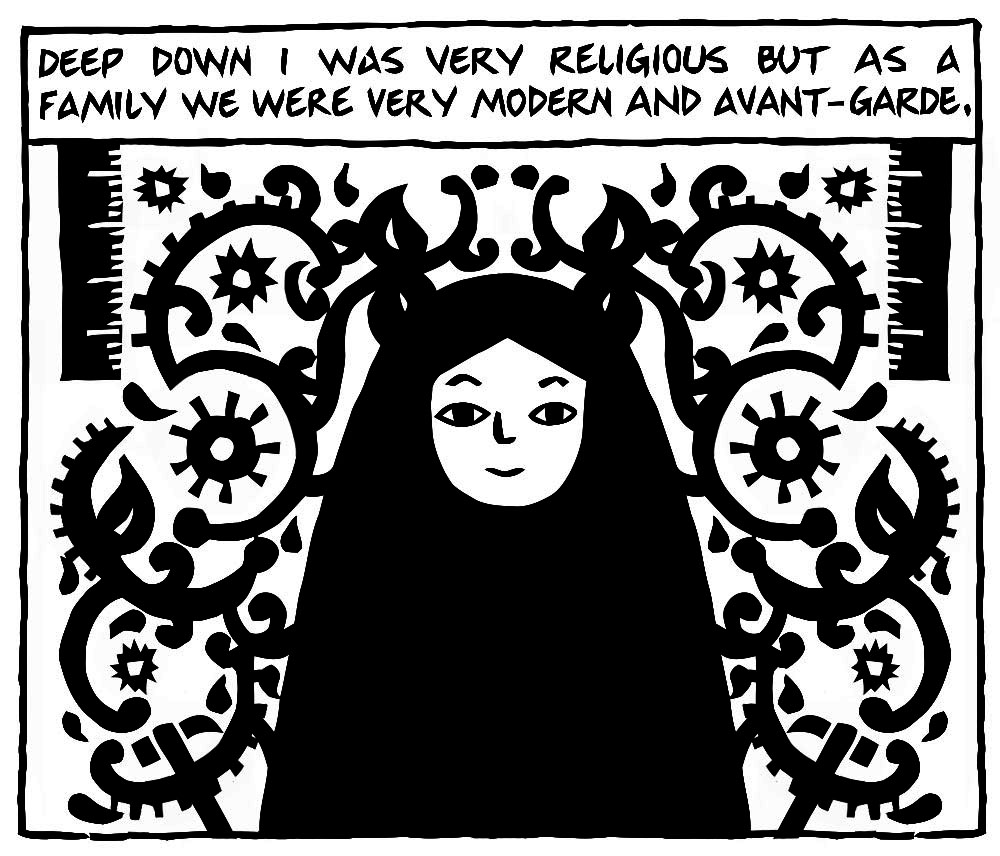This same week we also read Persepolis, an engaging and charismatic graphic novel featuring a young girl embroiled in religion and politics and the clashing ideologies of her native Iran. One conflict in particular of hers that resonated with me was this panel, in which she contemplates the two sides of her that she feels are at odds:
This panel struck a chord with me because I came into the course a student of the sciences. I was never quite sure how one might navigate the intricacies of both science and religion in order to maintain a strong, simultaneous belief in both. At the end of Persepolis, Marjane seems to end up disillusioned with many aspects of religion, especially after seeing it twisted by the realities of war and revolution. After a relative of hers is murdered, she has a dramatic falling out with God. In the remainder of the novel, she finds herself lying about how often she prays and wearing a veil to ward off suspicion. She ends up leaving for a French school, which seems like a symbolic shift towards Western thought and away from her religious roots. Of course she still harbors a deep religiosity, but the world has made it difficult for her to stay true to this idea.
In this manipulation, I opted for a more happy ending: at the end of this course, it seems certainly possible to balance religion and modernity. We have watched many clips of documentaries in class featuring women studying in university, strong individuals even while wearing veils. It is this notion of “individuality in spite of the veil” that Satrapi expounds upon in Persepolis, but after our discussion, it seems that some even interpret the veil as an empowering aspect of their lives. The veil need not be a symbol of old-fashioned oppression, and the desire to pursue knowledge need not come into conflict with one’s relationship with God. I thought the graphic novel medium was very apt to communicate the author’s message, and I thought appropriating it in a manipulation would pose a striking contrast to the original image. I integrated the two sides of Marjane’s struggle, merging the gear motif with the arabesques of the original image. The hammer and ruler, representing logic and modern progress, are also integrated in the flowing design. I decided to represent her in full veil to convey the idea that the veil can coexist with modernity; Marjane’s smile says just as much.
Medium: digital manipulation

